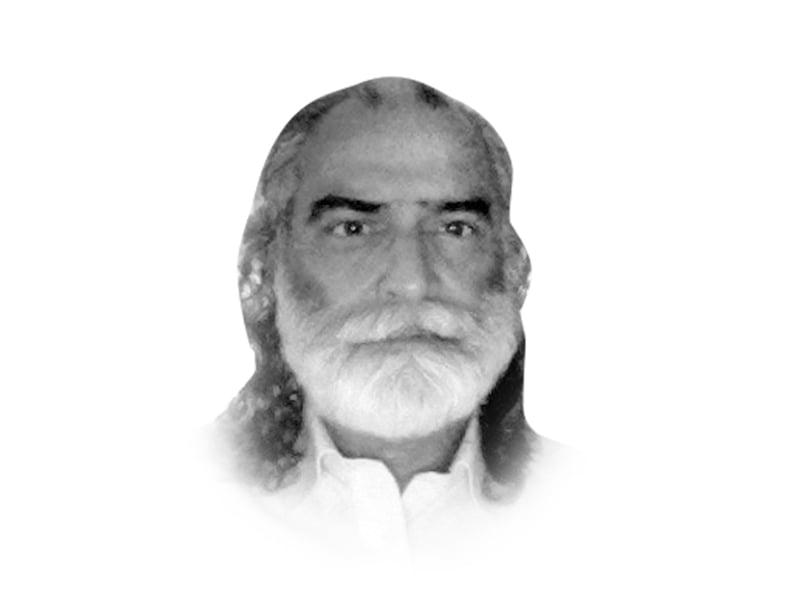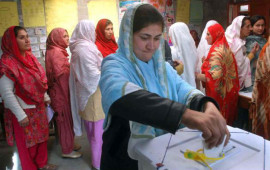
However, in the PK-95 constituency, the JI did little to encourage women from using their right to vote. This is not peculiar to the JI only; most parties suffer from this hypocritical behaviour. What distinguishes the JI from the other parties is its public posture. While so-called liberal parties would feel ashamed of such action, JI leaders attempt to justify its practice on the basis of culture and religion.
After a gap of 10 years, on May 30, the people of Khyber-Pakhtunkhwa (K-P) will be electing their local councilors. In Punjab and Sindh, local bodies elections will take place in September. Here, gratitude must be expressed towards the Supreme Court for making this possible. Former military dictator Pervez Musharraf also deserves appreciation for creating momentum for local-level democracy by introducing a revolutionary local government system in 2000, which had 33 per cent seats reserved for women in all three tiers of local councils. This produced nearly 40,000 seats for women and brought almost 100,000 women to the political arena nationally.
But the rate of contestation by women varied drastically from area to area. Higher the tribal, feudal and religious control in a given area, lower the rate of female contestation. In Balochistan and K-P, it was extremely low in the 2001 local elections but went up in the ones held in 2005, while Punjab and Sindh witnessed very high participation rates of women. This might have frightened the political elite in these two provinces. A drastic cut in women’s quota in both Punjab and Sindh is its manifestation. In Punjab, where contestation level was very high in 2005, the women’s quota is being reduced to 15 per cent for union councils and is about 10 per cent in the higher councils. Interestingly, the PTI and JI coalition government in K-P has kept the women’s quota at 33 per cent. This deserves generous appreciation. But its implementation should be observed diligently.
In this regard, let’s examine what is happening in Lower Dir. Its district council consists of 41 seats of which 13 are reserved for women. Out of a total of 1,226 seats, 396 are for women in village/neighbourhood councils (VNC). Only 464 women have filed nomination papers. This means that the seat-candidates ratio is extremely low — 1 to 1.17. Sadly, in the Adenzai tehsil, all women seats of VNCs have already been filled without there being any contest. Isn’t this alarming? The reports emerging from Dir indicate that most women seats will be filled unopposed. In the areas where this happens, it is also highly likely that women voters may not be allowed to vote. Despite huge constraints and risks, two courageous women in Lower Dir, both former councilors, have filed nomination papers to contest general seats. One of them was a member of the renowned Women Councilors’ Network. These women deserve our appreciation and support.
There is a need to identify early signs of any attempt of preventing women from exercising their right to contest and to cast votes. In this regard, FAFEN is planning to deploy observers across the province. It must find out who is involved in barring women from participation in local elections as well as identify those women who are willing to challenge the culprits.
One major objective of any election is to let the electorate elect its representatives through its free will. Pressurising any voter or candidate against their will is a violation of the Election Commission of Pakistan’s (ECP) code of conduct. Our political leadership has turned elections into selections through manipulations. Yet, the ECP has failed time and again to prevent them. Let’s hope this does not happen in the future. Those of us who dare to protest against violations of human and civil liberties should learn how to prevent such violations. The K-P local elections provide this opportunity.
Published in The Express Tribune, May 25th, 2015.
Like Opinion & Editorial on Facebook, follow @ETOpEd on Twitter to receive all updates on all our daily pieces.






























1714024018-0/ModiLara-(1)1714024018-0-270x192.webp)










COMMENTS (2)
Comments are moderated and generally will be posted if they are on-topic and not abusive.
For more information, please see our Comments FAQ